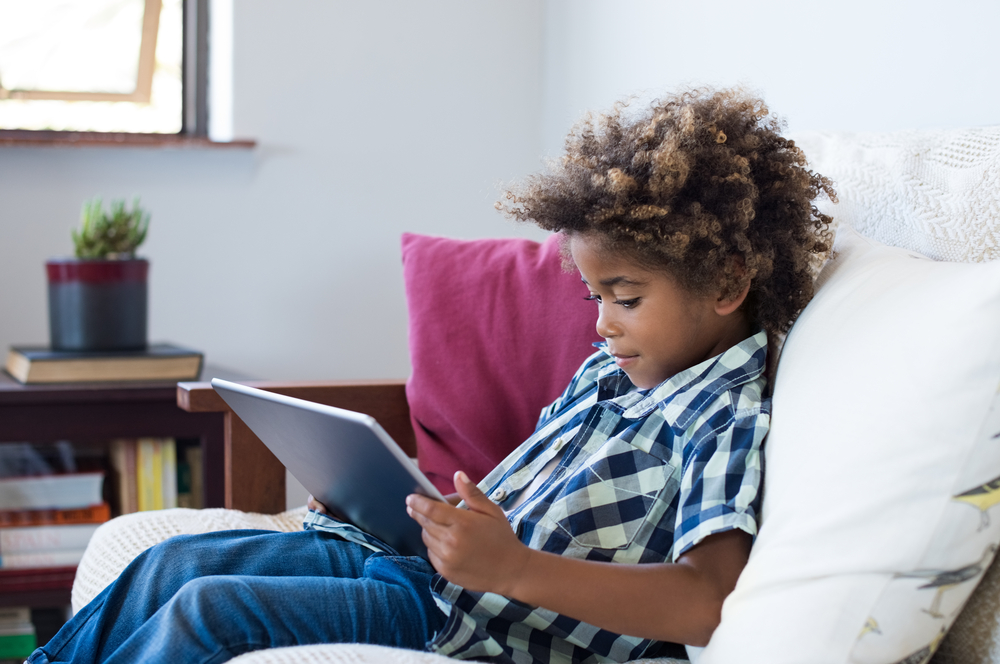
Reading 15 to 20 minutes each night might have even become part of the routine before children head to bed, and many teachers assign these minutes as reading homework. Some kids may dive right into their book, maybe clocking double or triple those recommended reading minutes.
Kids who struggle to read might dread those mandated minutes. And parents might not know how to help their struggling child. Apps and reading programs might help children who struggle to read, and these programs could be fun to use at night. What is the best reading app for kids? Here’s what parents should consider.
Finding the Best Reading Help App for Kids
According to Reading Rockets, an estimated 10 million children have reading struggles. Some parents may look for ways to help their child at home to boost their confidence, skills and proficiency. Thankfully, reading apps are plentiful. With so many options for parents to consider, though, finding the best program or app could be a bit overwhelming.
Apps and reading programs, though, can be very, very different. Some might focus on one core area of literacy—maybe phonics. Others, though, might be inclusive of all literacy skills, allowing children to practice and perfect core fundamentals of reading. Some apps are designed as games and may help children practice sight words or other skills.
Doing a quick search via Google Play or Apple’s App Store could bring up lots of different reading apps and programs. Some may even be free.
But what program is the best one? And how can parents sort through all these options?
Identify Your Child’s Needs
Finding the best reading app for kids means finding the best reading app for YOUR kid. To do this, parents need to identify what their child needs from the program. This goes back to the focus of a particular app or program.
A child that needs more intense reading help, for example, might not benefit from a simple app designed as a fun game. A child who just needs to practice sight words, though, could enjoy the free game and work on mastering that list of words.
Some parents might not know what app is best suited for their child, because they might not have identified the literacy component(s) with which the child struggles. They might just understand that their child is struggling to sound out words or having difficulties understanding the plot of a story.
Reaching out to the child’s teacher can help parents gain a better understanding of their child’s struggles. Teachers can provide data on the child’s reading level and help parents identify their child’s specific struggles.
Parents also could choose a reading program or app that addresses all the core fundamentals of the literacy journey. Readability, for example, helps children with phonics, comprehension and reading fluency.

Try Out Reading Programs
Some reading programs and apps provide a free trial period for parents and their children to better understand the features of the program. Trial periods may be a great way to explore the program and to see if the child engages with it.
Trial periods also can help parents find any issues with the program. Maybe the content isn’t engaging or the app suffers from technical glitches. Apps and programs may occasionally suffer from some glitches—this is the downside of tech—but the app shouldn’t be so cumbersome that using it becomes a frustration. Kids, after all, only have so much patience!
Parents might want to explore a few programs to compare and contrast the benefits. Or they may just decide to try out one program before committing to a subscription.
So how does a parent know if the program is engaging? Parents might want to sit with their child(ren) when they use the program for the first time. This allows parents to understand how the program works and to identify any tech issues during the reading journey. Parents also can talk to children after a lesson to see if their child liked the stories and content.

Understanding a Child’s Reading Progress
Parents investing in a reading app or program want to see results. They want to know that the program is working. When reviewing an app, parents might want to research how the program compiles reading data for parents to better understand their child’s reading level and progress with the program.
Readability provides parents with a Parent Dashboard. This section includes pertinent reading data for the child. Parents can review how long their child used the app, and see data related to reading levels as well as other literacy data.
The dashboard also lets parents create reports to send to the child’s teacher. These reading reports may help a teacher better understand the progress the child is making at home; data from the report can be used to compare to the child’s progress at school.
While parents want to see that the child is making progress on the app or program, parents also need to know that this progress is carrying over in the class environment. Readability’s literacy reports also can help facilitate communication between parents and teachers about the child’s reading journey.
Is the App too Easy…or too Difficult?
The best reading help app for kids should grow with their reading journey. Lessons shouldn’t be too easy or too difficult. Look for a program with books that are ‘just right.’
With Readability, the child doesn’t advance to a new level until they demonstrate proficiency at the current level. A built-in AI tutor helps them with pronunciation if/when they stumble, and the AI tutor also asks questions related to the understanding of a story.
Content is engaging, immersive and interactive. Even better? Struggling readers read stories and books that fit their interests; an older child isn’t going to be stuck reading a book better suited to the interests of a younger child.
Is the App or Program Affordable?
Free trial periods for apps and programs are only temporary. When choosing the best reading program for kids, parents need to find a program that works for their budget.
Before signing up or committing to a program, parents should investigate the program’s price and the fee schedule and other financial responsibilities. Some programs—like Readability—are billed monthly. Other subscriptions or program licenses might be billed differently.
Understanding the price and financial obligations of the program can ensure that parents aren’t hit with unexpected fees or surprise bills. Signing up for a free trial period also may require parents to enter a credit card or other payment method; not canceling the trial in a timely manner could mean that the parents are billed for a month of service. Before signing up for a free trial, understand the terms.
Are Free Programs Beneficial?
Some apps or reading programs could be free. So are these programs beneficial? While the program might be limited in scope, they could still be beneficial to the child. Again, some of these programs can help with sight words or other reading skills.
Free apps could be fun for the child while helping them gain proficiency in a specific area. Again, though, parents may want to research the app to learn more. Free apps also could include options for in-app purchases; this could allow kids to rack up some charges within the app. Screentime Labs offers a tutorial on how to turn off in-app purchases for both Android and Apple devices.
What is the Best Reading App for Kids?
Parents may hunt through the internet in search of that diamond in the rough—the best reading help app for kids. Really, though, the best app for kids is the app or program that works best for YOUR child and helps address their specific reading struggles.
Not every app is ideal for every child. This is why parents might want to investigate different apps and programs to find one that matches the needs of their child.
Teachers can help parents better understand a child’s specific struggles and their current reading levels. Sometimes reading levels are provided to parents in numbers or letters…or maybe both. Parents who receive reading reports from schools that are a bit confusing can check out Scholastic for a rundown on reading levels. Scholastic also provides a link to a Reading Level Conversion Chart—this lets parents match Lexile Levels to a DRA Level or Scholastic Guided Reading Level.
Some parents might choose to use reading programs to enrich their child’s reading at home. Some children might struggle with reading confidence, and parents might use programs at home to help their child gain proficiency and feel more confident reading aloud.
Choosing the best reading help app for kids may require a bit of research from parents. Not only should the program meet the child’s needs and help address their struggles, but it also should hold the child’s interest and be affordable for parents. There are so many reading programs available, and the right one is out there…just make sure it’s the best one for YOUR child.

 Español
Español